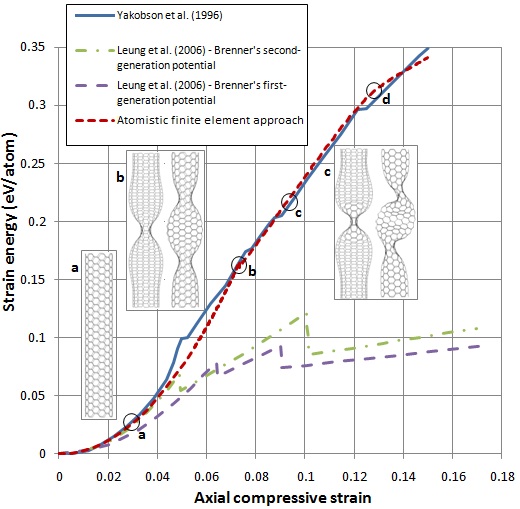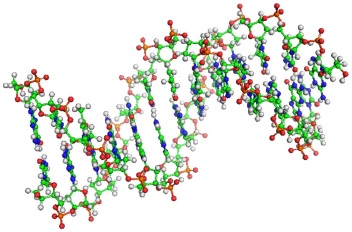Erick I. Saavedra Flores
| HOME | PUBLICATIONS | PROFESSIONAL EXPERIENCE | ACADEMIC EXPERIENCE | CV |

|
Civil Engineering Department, School of Engineering, University of Santiago. Av. Ecuador 3659, Estación Central, Santiago, Chile Tel: +(562) 27182803
|
|
Atomistic Finite Element Approach |
||
|
The atomistic finite element approach establishes a linkage between structural and molecular mechanics at the atomic bond level, and provides a way to model the deformation of atomic systems by means of conventional finite element analyses using classical beam elements. This approach possesses a discrete representation which makes it particularly suitable for capturing local information from individual atoms and from interatomic forces, with the possibility of introducing
defects or inclusions in the atomic structure.
Some publications in this area:
|

